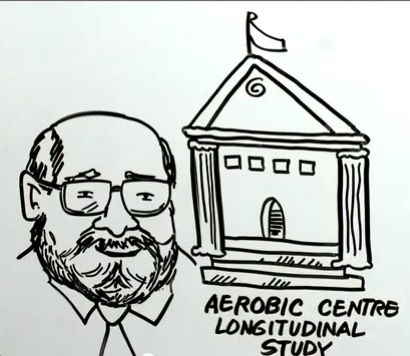Three exciting updates from the frontlines of health promotion through physical activity.

First, congratulations to Professor Steven Blair for winning the Bloomberg Manulife Prize for the Promotion of Active Health. This international competition celebrates a researcher whose work promises to broaden understanding of how physical activity, nutrition or psychosocial factors influence personal health and well-being.
Professor Blair has tirelessly raised awareness of the burden of low fitness. His dedicated data gathering and adroit analysis has allowed him to deduce that physical inactivity is the biggest public health problem of the 21st century. His 2009 editorial in BJSM shares this title and has been downloaded more than 20,000 times (available free online).
To read more about the award, follow this link to the Globe and Mail.
Secondly, after garnering global attention, Mike Evan’s videos 23.1/2 hours is being translated into multiple languages. Sports Medicine colleagues will ensure the video can be enjoyed by speakers of Arabic, Spanish, Chinese, and Italian. And there will likely be more offers to come.
This will further enable the first physical activity ‘YouTube sensation’ – 23 1/2 – to promote behaviour change, while recognizing the physical activity challenges in a wide range of countries.
While 1.6 million hits demonstrates 23.1/2’s current success, translation into multiple languages may take this video to the ‘next level’ with a goal of 10 million views!
The video has already gained international traction as shown by the breakdown of views per country: US 844, 664, Canada 320, 000, UK 61, 345, Australia 49, 100, India 32,000, Netherlands 14, 977, Singapore 13,761, Germany 13, 345, Malaysia 11, 986, Sweden 11,589, Israel 11, 387, Saudi Arabia 10, 786, Mexico 10, 607…and the list goes on.
If you haven’t watched the video yet, check it out here (and note Steve Blair’s fun cameo at around 2 minutes 50).
And a third exciting sign of progess was Scotland appointing a physician to head their campaign against physical inactivity.
Doctor Andrew Murray (@docAndrewMurray) – who clearly has to differentiate himself from his colleague “Andy Murray” (@andy_murray).
The more important of the two, although seemingly not by # of Twitter followers, Doctor Murray, makes the point that “having a low level of fitness is equivalent in risk to having diabetes, smoking, and being obese combined”. BJSM likes that emphasis – amazing but true. All the best in the job DocAndy – we look forward to interviewing you for a BJSM podcast (with subtitles).
For more information on this check out the BBC article: GP runner Andrew Murray given sports education role
So – things are moving in the right direction – let’s all take up the cudgels and promote, promote, promote. Remember that Kotter said transformational changes takes 10 times as much communication as you expect it will need (plus 7 other things: see BJSM article on Kotter’s eight-step programme for transformational change).
Related BJSM publications
Bauman A, Titze S, Rissel Cand Oja P. 2011. Changing gears: bicycling as the panacea for physical inactivity? BJSM 45:761-762. (Free online!)
Khan, KM. 2009. Mid-year review: physical inactivity universally accepted as the biggest public health problem of the 21st century, shoulder exam challenges, and progress against the scourges of anterior knee pain and ACL injuries. BJSM, 43:469-470. (Free online!)